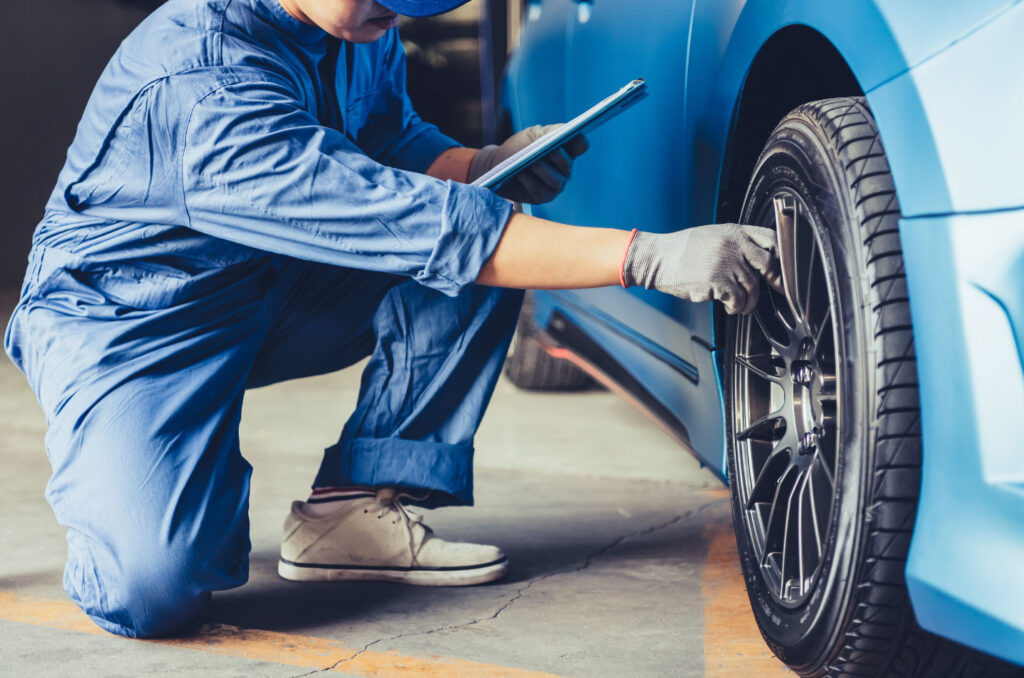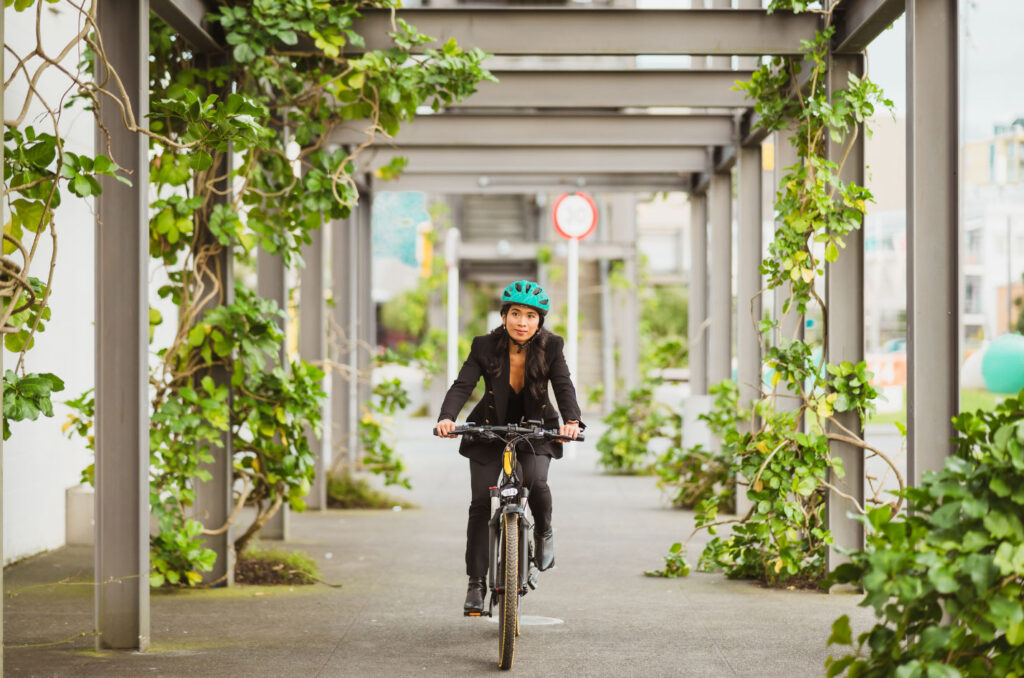Environmentally Friendly Work Commute – 6 Ways To Become a Green Commuter
Estimated reading time: 11 minutes
One of the most effective ways we can begin to live a more sustainable lifestyle is to reduce the emissions we create while commuting. There are far more environmentally friendly modes of transport than each of us driving solo to work and sitting in rush hour traffic daily. Keep reading to learn the definition of sustainable transport, green transportation examples, ethical commuting advice, and environmentally friendly work commute tips.

Jump ahead
Encouraging Green Travel Modes in the Workplace
Resources for Environmentally Conscious Travel to Work
Reasons to Make the Switch to a Green Commute
If you’re still wondering about the importance of environmentally sustainable transport, consider the following:
According to the EPA, in 2021, passenger cars and light-duty trucks traveled just under 2.6 million vehicle miles. The greenhouse gases emitted by these vehicles total more than one billion metric tons of CO2 – almost ten times that of commercial aviation in the same year! The IISD states that “each year, almost 185,000 deaths can be directly attributed to vehicular pollution.”
Although cars are now more fuel efficient than in the past, more people are also driving than ever before. Many families own several vehicles and live far from where they work or attend school daily. Traffic congestion and idling time are at an all-time high, leading to more emissions in our planet’s atmosphere. More cars lead to more road wear and tear, which costs money to repair.
The United States Census Bureau states, “In 2019, the average one-way commute in the United States increased to a new high of 27.6 minutes.” This means the typical American spends about one hour of their weekday sitting idle, driving to and from work. I can think of far better things I’d like to do with an hour of my day!
It’s time we all start considering eco-aware transportation choices, including those in charge of deciding our city’s transport infrastructure.

eco-friendly transportation benefits
There are many benefits to earth-friendly commuting practices – here are just a few!
- First, of course, are the positive impacts of green commuting habits on the planet with decreased greenhouse gas emissions.
- Less air pollution means healthier people, too. The World Health Organization has also linked air pollution to seven million premature deaths yearly.
- If you choose a body-powered eco-friendly means of transportation, you’ll be blessed with other health benefits from the fresh air and exercise.
- Another advantage of low-impact commuting choices is the cost savings you will incur by saving on fuel, parking, or even car insurance or repair costs.
- Fewer vehicles on the road mean less congestion, wear and tear, and maintenance required to repair the streets, allowing those saved funds to be used elsewhere in the city’s budget (on green initiatives, perhaps?!)
- Public transit helps achieve community equity objectives and creates jobs.
- From experience, opting for a more eco-conscious travel to the workplace improved my mental health – sitting in traffic is NOT my idea of fun!

Need some new clothing for work? After you’ve considered second-hand, check out some of our recommendations for sustainable brands here!
6 friendly ways to become a green commuter
Choose the responsible commuting practice that suits your lifestyle, schedule, or preferences best, or combine them in a way that makes sense for you! There are many resources to help you choose which environmentally friendly commute works for you and plan your route.
Our friend Ryan Palmquist of Save Our Seine offers this advice when attempting to make the switch to a car-free lifestyle – “Start by shaving off trips that really don’t need to be done by car. Get in the habit of eliminating the most unnecessary car trips in your life, and you’ll find that the bar for what constitutes a “necessary” car trip will keep getting higher and higher, until you’re ready to take the final leap.”
Sign up for our newsletter here and we’ll send you a free copy of our “Ultimate guide: Understanding Sustainability!”
1) Use Your Body to create an environmentally friendly work commute
This was by far my favorite way and the most eco-friendly means of transport to get to and from school when I was teaching. Biking to work for sustainability only took about fifteen minutes longer than driving and was far more physically and mentally rewarding. I also enjoyed running home sometimes, which also took care of my exercise for the day!
If you need to familiarize yourself with which route would be best for you to walk or ride to work, try using those features on Google Maps to help you plan. The app will choose the most bike or foot-friendly route, sometimes different from how you would drive to work. This may even shorten your commute (distance-wise) or take you to some new areas and sights you have yet to see! Change up your route to make it more exciting, or to vary the length. The most interesting and a zero-waste commuting option!
When I bought my bike in 2015 and started riding it to work, I realized how many unknown paths, trails, and bike lanes there were in my city. Winnipeg is by no means known as a bike-friendly city. Still, if you’re adventurous and have some time, you could find creative alternatives to riding on the road! Try joining a cycling group online for your area to get city-specific tips from people experienced in commuting by walking or cycling where you live.

2) Take Eco-Friendly Public Transportation
Another sustainable transportation alternative is opting for eco-friendly public transportation. According to the KCATA, “A single person who switches from a 20-mile commuting alone by car to existing public transportation can reduce their annual CO2 emissions by 20 pounds per day, or more than 48,000 pounds in a year.”
Depending on your city and where you live, this may be an easy and viable or challenging option. Even though I lived fairly close to my workplace, along a major route, my school was in a neighborhood not officially considered part of the city. Therefore, the closest a public transit bus could get me was about two miles. Other bus commutes in my city require one or more transfers and take one to two hours to complete.

If your sustainable city has a more efficient public transportation system, this option could be good for you. Chances are there is an app to help you plan your routes – find it with a quick online search with the name of your city’s transport system. Google Maps will also plan your route with the public transport feature.
One city that is winning with its environmentally sustainable transportation systems is Jakarta – “Transjakarta, the city’s bus rapid transit (BRT) system, reached a milestone of serving one million passengers per day in February 2020 (ITDP, 2020).”
3) Start a Carpool or Rideshare for an environmentally friendly work commute
You never know who else at your workplace wants to live more sustainably or save some money on transportation costs. Send an email or put a flyer in your staff room to see if anyone wants to ride-share with you. Many apps for specific cities also help motorists find other green commuters to carpool with. Lyft Shared lets you carpool and split fares, and Scoop helps you to arrange carpools with others in your neighborhood. This is similar to an app called Go Manitoba in my hometown of Winnipeg, Canada. In the winter, I used to catch a ride with a coworker that passed near my house on the way to work and then run home to a warm shower at the end of the work day.
Although not created for work commuting, the app Go Kid helps parents find and provide carpool rides for their children to school, clubs, and team activities.
4) Work from home or change your hours

We may not all have this flexibility in our jobs, but working from home has many benefits – one of them being eliminating your commute. The most eco-friendly mode of transport is zero emissions! Even if you can convince your employer to allow you to work from home once or twice a week, it all adds up. Since I resigned from teaching and became a digital nomad, this is now my reality!
If this is impossible for you, you may have the option of flexing your workday by a couple of hours. Avoiding rush hour means less time on the road and less idling while stuck in traffic. Even if you’re already cycling or taking public transit to work, your commute will be shorter (and safer on a bike) when there is less traffic in the streets.
5) Plan ahead To Create A more Environmentally Friendly Work Commute
Always take the shortest or most efficient route – the further we drive and the longer we idle, the more emissions we produce. Using apps to track construction or other delays, like Google Maps, will help you avoid unnecessary detours or traffic jams. If you have sustainable shopping to do or errands to run, try and work them into your commute rather than making a separate trip later to save the extra time and distance spent in your vehicle. I used to do what I called my “Commute Trifecta” – I would take my vehicle to work one morning, leave it there and run home, biking to work the next day. Then I could drive home and pick up groceries on the way the next day. Wash, rinse, repeat!
Palmquist also tells us their biggest challenge when going car-free was “changing our lifestyle and learning to plan in advance. You take for granted with a vehicle that you can just get up and go, grabbing a few things on your way out the door.” He makes a good point when stating “it’s not just a quick zip back home if you find you need something you forgot.” The silver lining though? “We found this change to be one that had positive effects on us and our lives far beyond our commuting habits.”
6) Switch or Maintain your vehicle

Although electric and hybrid vehicles still have flaws, if you must own a car, consider an electric one next time you’re due. A vehicle with a fuel efficiency of 25 miles per gallon traveling 15,000 miles a year emits 6.7 metric tons of CO2 compared to 2.2 metric tons for the equivalent-sized electric vehicle. You can learn more about electric vehicles on the EPA’s website here.
Maintaining your vehicle improves fuel efficiency, and a properly cared-for vehicle will last longer, meaning you won’t need to replace it as often! Use the most eco-friendly motor oils and adequately fill your tires for maximum fuel efficiency.
Encouraging eco-friendly transportation in the workplace
We as individuals can change our lifestyles and choose more environmentally friendly means of transport, but employers should encourage sustainability too! With just a few sustainable commuting initiatives like installing bicycle storage or a place to lock up, and a change room for employees, workplaces can help facilitate becoming a green commuter. If your workplace charges a parking fee, this also encourages you to take public transport or carpool. Perhaps your employer would even subsidize bus passes for employees who want them.
And while we’re on the topic, your employer should encourage other sustainable practices – get others involved at work by starting a green committee and help others switch to an environmentally friendly work commute!

resources for eco-friendly transport
We’ve already mentioned a few apps and sustainable commuting programs that can make switching to sustainable commuting easier for you. Here they are again, along with a few others:
Ridester – ridesharing that can help you become a green commuter.
Scoop – an app that automatically matches nearby commuters into quick, efficient carpools.
Lyft Shared – connects you with other riders along your route at a discounted price.
Go Kid – simplifies school and activity carpooling for your kids.
Google Maps – can help you plan the best walking, cycling, or traffic-free commute.
Final Thoughts about an environmentally friendly work commute
Opting for environmentally responsible commuting habits can help you achieve the sustainable eco way you crave. Remember, the most environmentally friendly form of transportation is any that reduces your emissions, so start small and work your way up. It may take a little effort, but you can indeed become a master of sustainable transportation and a green commuter. Happy (and healthy) commute!







